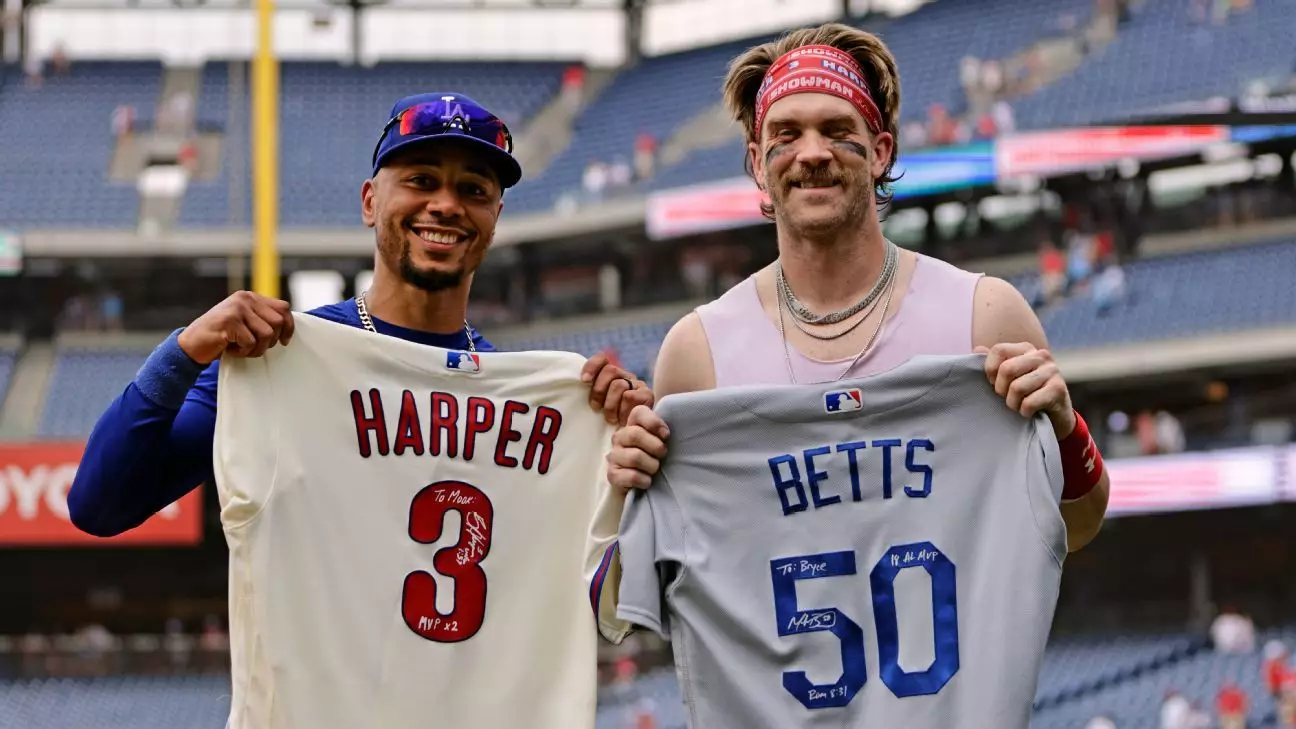As Major League Baseball continues to evolve, the conversation surrounding payroll disparities has become increasingly contentious, placing small-market teams under a glaring spotlight. The recent actions of the Los Angeles Dodgers, with their staggering payroll exceeding $319 million, exemplify the kind of financial aggression that creates natural divides within the sport. Phillies star Bryce Harper doesn’t shy away from this reality, boldly declaring that “only losers complain” about big spenders like the Dodgers. This sentiment reflects a growing acceptance among elite players that financial muscle translates to on-field success, pushing the narrative that the rich will only continue to get richer.
In the ever-competitive world of professional sports, teams that boast ballooning payrolls can afford not just star players, but a deeper talent pool that strengthens their overall roster. With the league average salary surpassing $5 million, it’s imperative to scrutinize how this concentrated wealth shapes both the landscape of MLB and the playing field. Simply put, larger markets such as Los Angeles and New York wield a level of financial power that enables them to consistently compete on a national stage, while smaller-market teams often find themselves scrambling to keep pace.
Beyond the Numbers: Dodgers’ Strategy and Star Power
The Dodgers’ strategy goes beyond mere spending; it’s a calculated attempt to build a dynasty. With additional signings like Blake Snell and Michael Conforto, their approach revolves around enhancing their already competitive roster, fundamentally changing the dynamics within the league. Although the payroll figure appears inflated, much of it results from deferred payments, creating the illusion of financial constraints. Shohei Ohtani’s record-setting salary of $70 million is a prime example of how the Dodgers manipulate payroll structures to fit their long-term vision, which should spur reflection among teams strapped for cash.
Harper’s admiration for the Dodgers speaks volumes about the culture that exists in a franchise known for attracting talent. Players are drawn not just by the allure of high salaries but by a rich legacy and the chance to compete for championships. The Dodgers have created an environment that’s synonymous with winning— something that all teams aspire to embody. Ultimately, the gravitational pull of larger markets like Los Angeles tends to overshadow teams with more modest financial means, leading to what some might call an inherent imbalance in the league.
The Repercussions of Disparity: Competitive Imbalance or Evolution?
The implications of these financial disparities extend beyond mere player contracts and team success. Baseball Commissioner Rob Manfred has voiced concern over the volatility such extremes can create, particularly given the absence of a salary cap. As players and fans become increasingly vocal about their concerns, the question arises: is this financial disparity merely part of a natural evolution within the sport, or does it indicate a systemic flaw that needs to be addressed?
With clubs like the New York Mets leading with projections around $322 million and following closely behind the Dodgers, it paints a picture of a league where a select few can afford luxury players at the expense of competitive balance. The hope, articulated by Manfred, is to ensure that the sport maintains its integrity and competitive edge. Yet, it remains unclear how precisely the league will tackle these questions—whether through stricter regulations or other measures designed to foster parity among clubs.
The Future of Competitive Baseball: A Call for Equity
As the league progresses towards the expiration of its collective bargaining agreement in 2027, discussions around financial equity will gain prominence. In an era where talent is heavily traded for dollars, the game’s authenticity could teeter on the brink. While Harper’s comments may resonate with players committed to a winning ethos, they also highlight the frustrations of those in smaller markets, desperately trying to compete under oppressive financial realities.
The MLB stands at a crossroads, where the decisions made in the coming years will reshape its competitive landscape. Teams must strategize not just for today but for an equitable tomorrow. If baseball is to thrive as a showcase of talent and competition, a recalibration of financial practices may become imperative to prevent the game from devolving into a simple showcase for the highest bidders.

